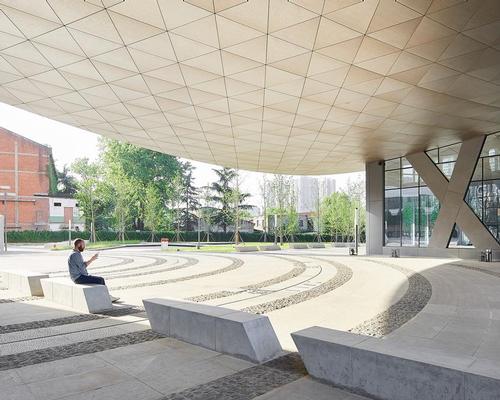18 Jul 2018
Studio Libeskind finish Wuhan museum reflecting the city’s ‘future and spirit’
BY Luke Cloherty

Daniel Libeskind and his New York studio have completed their first venture into China – a museum in the Hubei province’s capital city of Wuhan.
Working in collaboration with the City of Wuhan and Vanke, the largest property developer in China, Studio Libeskind designed the Museum of Zhang ZhiDong to function as a public hub with a fully landscaped plaza for locals to use.
The museum’s upwards bowed central structure nods to ships sailing up and down the Yangtze river – which runs through the city – and is clad in a series of triangular steel panels. Two glass and steel towers support and house the entrance lobby, the main stairs, the museum's shop, its library and offices.
Exhibition designer Diameter Narrative Design created the interiors of the halls, which celebrate the life and work of the Chinese industrialist Zhang ZhiDong.
Studio Libeskind founder and principal architect Daniel Libeskind said: "My goal was not to simply create another museum, but to give Wuhan and the region a new destination.
"By lifting the museum up, we were able to create a new public plaza while delivering to the city a world-class cultural institution that reflects the future and spirit of Wuhan," he added.
The landscaped plaza’s surface is made from local stone and other materials salvaged from the site demolition. It sits around and underneath the building and will be used for outdoor gatherings and activities by the people of Wuhan.
This inclusive, people-centred focus is typical of Libeskind’s work and general rhetoric. In a 2017 interview, the architect spoke to CLADmag. He said: “Architecture can only thrive in a democratic environment, and that means through involving people. More than just voting whether they like it or they don’t like it, people should be actively encouraged to engage in conversations about architecture itself.”
Close Window